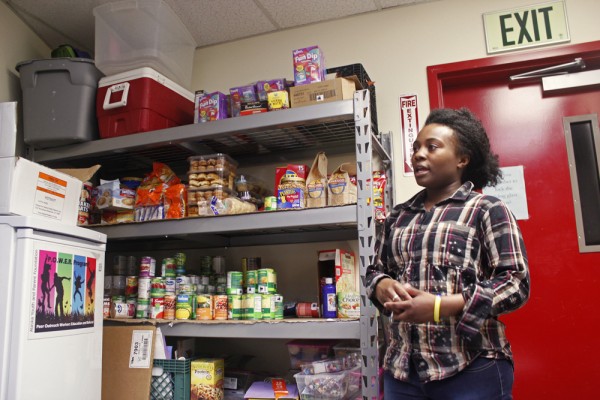
If you’re a teenager in Anchorage struggling with homelessness, hunger, or addiction there are few places to turn. One of the few organizations in Anchorage helping at-risk teens on their own terms is hidden in plain sight in one of the city’s busiest buildings.
The POWER Teen Center is up a flight of stairs in the hectic Downtown Transit Center. Just past the glass doors is a walkway, and from there Calesia Monroe can see everyone downstairs waiting for their bus.
Calesia is 17, and has been employed as an outreach worker at Power–which is what everyone there calls it–for almost three years. On a tour one Friday, close to 5pm, the staff was closing up for the weekend, ushering dozens of young people out the door.
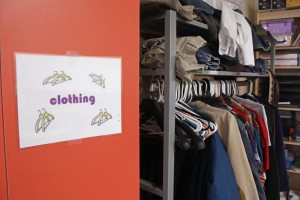
In the front room people hang out, watch TV, and can sign up on a clipboard to see a nurse for STD/STI testing.
“People just sit out here and chill out,” Calesia tells me. “And then we also have the condom giraffe,” she adds, opening a giraffe-shaped cabinet stocked with prophylactics for clients to take.
The Power Teen Center is one component within Alaska Youth Advocates, a non-profit targeting an at-risk population between the ages of 14 and 24. It offers basic services like food and clothing, and connects at risk kids to resources like housing, counseling, and even treatment. Last year, the on-sight medical clinic tested more than 400 young people for sexually transmitted diseases.
Don’t miss the rest of the stories in our series, The Blind Spot.
Paid youth staffers like Calesia work at the center, but they also carry backpacks full of food and supplies doing street outreach in downtown Anchorage and as far away as the Dimond Center.
“I think that we’re much more on the side of safety and linkage, as far as being the first line of contact,” says Chris Mortinson, who supervises the center and its staff.
“We use a harm reduction model, meaning we’re not going to kick out youth either because of them using or because of other different difficulties they may have,” Mortinson explained. The goal for him is looking past barriers young people may face in order to get them to reach other services.
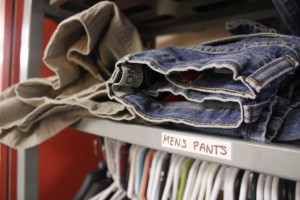
As Mortinson and I are talking inside the pantry, a young man pokes his head in and asks if he can fill up a bag of food. Mortinson immediately obliges, and helps him pick out dry-goods and a package of lunch-meat from a freezer.
Power’s approach is similar to the Housing First model, which is based on the idea you can’t help people in crisis with big life issues if immediate concerns like hunger and safety aren’t being met. That is part of the reason the center is located in the bus station.
“Our youth are here,” Mortinson said, “whether we’re here or not, our youth are downstairs and hanging out here.” One of the peer outreach works had recently told Mortinson that even on the days Power is closed, Saturday through Monday, there are often regulars leaning against the center’s glass doors.
Calesia is more candid about how the location fits with the mission. Many of the clients she works with are surviving poverty, addiction, and trauma. The geography of downtown and the bus system play a prominent role in that, so the center makes sense.
“A lot of drug-related activity is going on downtown, a lot of illegal activity is going on, a lot of people in need, and a lot of people coming in and out,” Calesia explained.
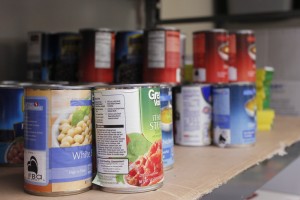
Power does not have data on how many young people they pull out of trouble. And that is intentional. They do not ask for IDs from clients or do any kind of tracking because they know that for one reason or another some of them do not want to be found. But Mortinson and Calesia both say that at the anecdotal level they see the center making a huge difference in the lives of the young people it serves.
Some of Calesia’s perspective on what clients at the center face came from running away when she was 14 and her family was homeless
“I didn’t run away from home because it wasn’t a home,” she said. “But when I ran off to the Covenant House they immediately contacted my mother, and she put me in a girls home.”
She liked the stability at the girls home, but then her mother pulled her out.
“So I was back on the streets,” Calesia said. Many of the housing and shelter resources for adults felt off-limits because she was still a minor. She doesn’t know what she would have done, or what she’d now being doing if she hadn’t been for the center. “I probably would have been doing some of the stuff that the clients here at Power are doing, and getting really deep into.”
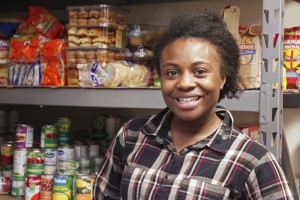
Still, hers is a happy story: in the fall Calesia is starting college at the University of Hawaii. She plans on majoring in Peace Studies, focusing on women, gender, and race, because she thinks it will help her work on behalf of underrepresented groups, including young people.
“Power has opened that door for me to be an advocate, a leader in my community,” Calesia said, her eyes brightening.
You can hear in her voice that this work is a double-edged sword for Calesia. It makes her laugh, gives her a sense of purpose, but it is exhausting, and she’s had to leave the job three times to give herself breathing room. She can tell she’s approaching burn out, and she’s not even legally an adult.
- The Blind Spot: Spaces Between Statistics
- The Blind Spot: A System of Order Over Chaos
- The Blind Spot: The Sobering Decision To Quit/How To Quit Meth Alone
- The Blind Spot: Beyond No-Man’s Land
Anne Hillman and Zachariah Hughes received Alaska Press Club data journalism fellowships, which helped them produce this story. This coverage is supported by the Recover Alaska Journalism Project fund at the Alaska Community Foundation. Contributors to the fund are Alaska Children’s Trust, Alaska Mental Health Trust Authority, Bristol Bay Native Corporation, John S. And James L. Knight Foundation, Mat-Su Health Foundation, Providence Health & Services Alaska, Rasmuson Foundation and Wells Fargo. More information can be found at www.recoveralaska.org.
Zachariah Hughes reports on city & state politics, arts & culture, drugs, and military affairs in Anchorage and South Central Alaska.
@ZachHughesAK About Zachariah




